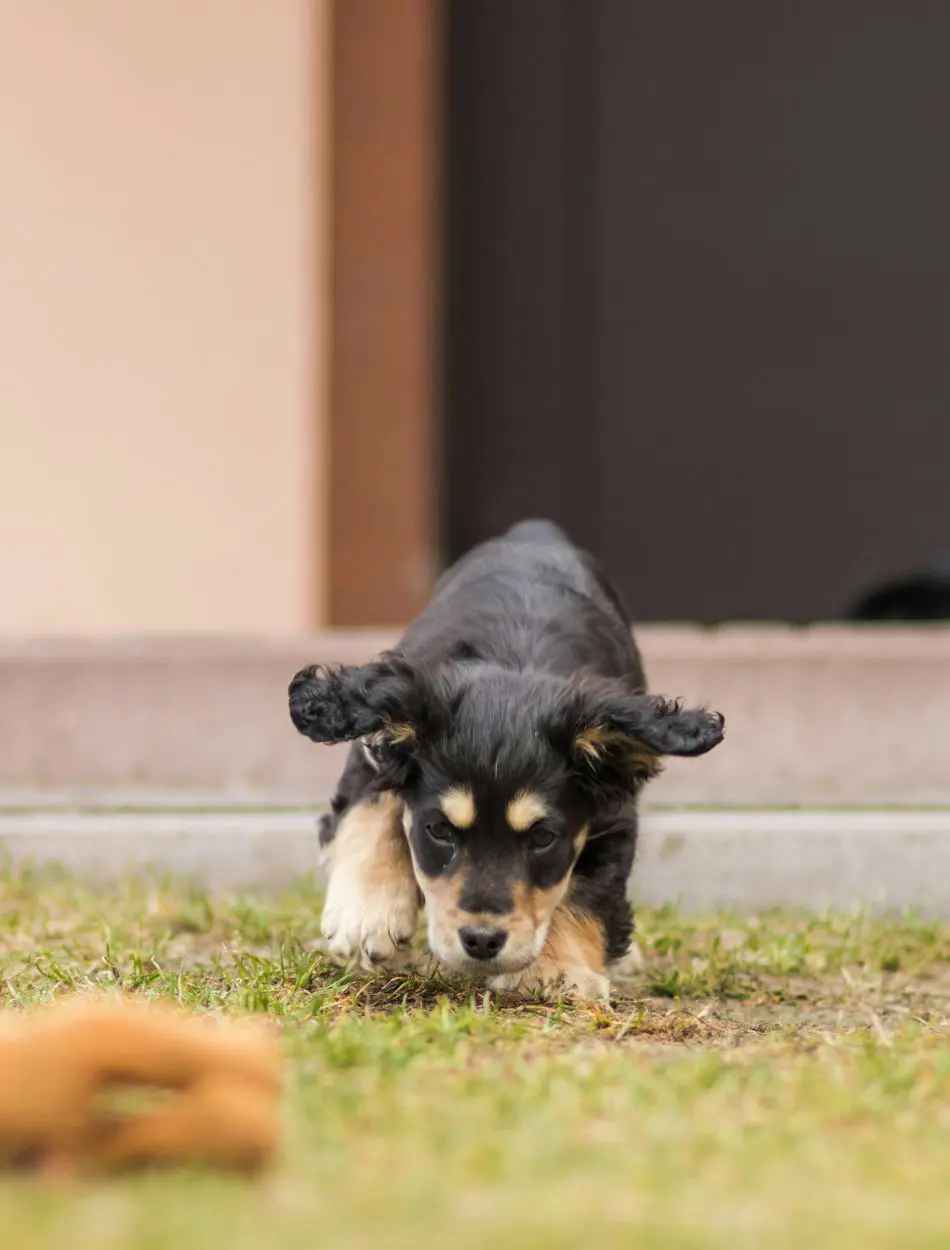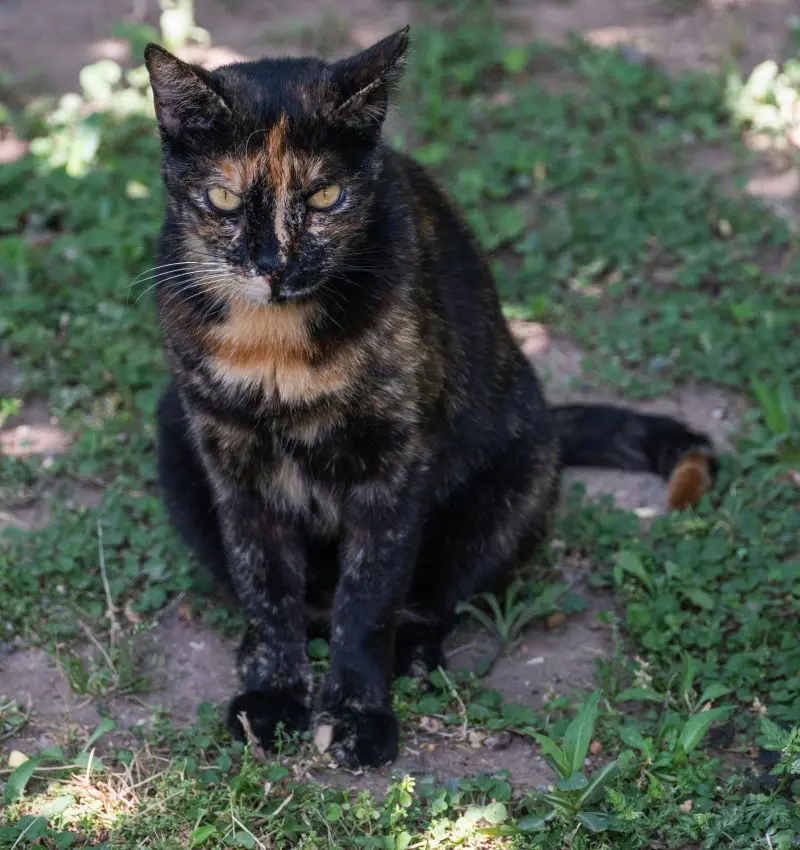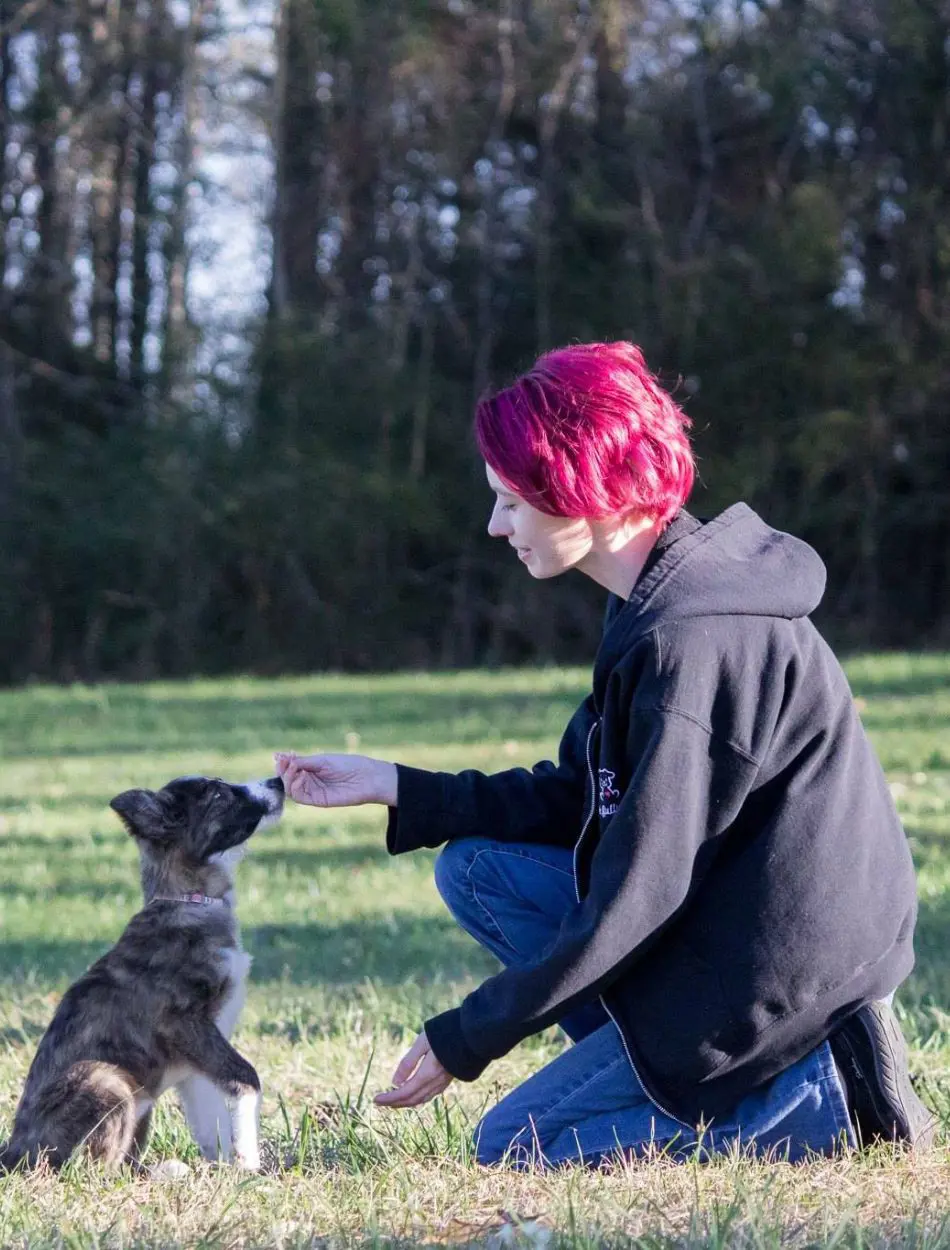17 Reasons On Why Do Cats Have Tails

Cats are some of the most fascinating animals as their long, thin tails are one of their oddest features. Their tails help them navigate tight spaces and express their emotions, making them essential for both physical agility and social interaction.
This article will help us understand the functions of a cat's tail and appreciate these mysterious and beloved pets more.
1. Aids in Balance
It serves as a counterbalance when the feline pet is walking on a narrow ledge or even a fence. While the cat moves, the tail usually moves to one side or another and helps in steadiness of not falling.
That is all the more necessary for cats since they are naturally curious animals, and hence spend most of their time exploring the surroundings-environment usually at heights or inaccessible places. The balancing capability of the tail enables the cat to move graciously and precisely, even when in a very precarious situation.
Aside from walking, the tail helps with balancing while running or making sudden turns. When the cat suddenly changes direction, the tail aids in steering and balancing the body to go as fast and as accurately as possible.
2. Means of Communication
The position and movement of a cat's tail become symbols of a wide range of emotions and intentions, a cat that displays its tail held high is usually confident and affectionate and one whose tail is puffed up may be frightened or irritated. By watching a cat's tail, one might thus know its mood and maybe what it is thinking.
Aside from these emotional displays, cats communicate intentions using their tail. A slow and gentle wag of the tail may suggest that the cat is unhurried and contented, whereas one that moves rapidly and twitches means the cat is concentrated or irritated.
These can be decoded to have a better rapport with your cat, whereby you respond appropriately to their needs and feelings. The tail is a versatile means of communication that enables cats to express themselves without making any sound.
3. Helps in Navigation

The tail allows cats to move with greater ease through their environment. In the instance of the cat that has to navigate through a narrow passage, the tail almost acts like an extension of the body as the animal makes the necessary adjustments due to its environment.
This could be helpful in foreign territories or even on hunting grounds for wild cats. Different forms of locomotion of the tail allow the cat to gauge its spatial awareness and permit seamless, fluid motions accordingly.
Being curious animals, cats often get themselves into tight environments where they are often challenged with having to move in a very precise manner. The use of the tail for navigation is not restricted to tight spaces but also extends into more general movements such as jumping and landing.
4. Expression of Mood
A cat's tail gives away everything that is in his mind. It may be in a relaxed state, in which case it would be loosely slung behind the animal, or it could be oscillating with gentle strokes from left to right.
If the animal feels threatened or frightened the tail could puff out expanding the size of the body and making the cat appear much bigger and intimidating. The visual signal enables another animal, or human to understand the cat's perspective without the need to express this through voice.
Other indicators of mood come from different positions of the tail. While a tail held high right up, but with only a slight curve near the tip can normally be taken as a sign of a happy, approachable cat, holding it between the legs may well denote being afraid or submitting to a situation.
5. Used while Hunting
The tail allows the cat to balance when pursuing its intended catch. The movements of the tail enable the cat to go stealthily so that it can remain poised for the right moment it needs to make a jump. Such tail movements also help to keep the body of the cat in alignment subtly and make all its movements swift and accurate.
Along with balance, the tail helps in tactics, a cat changes its tail to divert the prey or to signal other cats in case of group hunting. The flexibility and responsiveness during hunting are what bring about the success of their hunting.
From hunting in the wild to hunting at home with a toy, the contribution of the tail towards balance and coordination cannot go unnoticed. This explains why cats happen to be such very effective and skillful hunters.
6. Serves as a Thermoregulator

A cat's tail serves as a body temperature regulator in case of very hot or cold weather. During the cold weather, cats wrap their tails around them so they may not lose the temperature inside their bodies. The fur on the tail provides extra insulation, thus allowing it to stay warm and comfortable.
This is highly evident from those moments when cats fall asleep or go into rest mode, as their tails instinctively act to protect them from the cold. This tool is used for quite another purpose in hot weather.
Cats can achieve a fanning effect or provide a minimal cooling breeze with their tail when they are on the go and help dissipate the heat from the body in this way. This is because the tail could protect the vulnerable surfaces around the face from the sun's rays.
7. Balance During Scaling
It is natural for cats to climb, and their tails play a major part in keeping them stable during these activities, a balancing pole of sorts is created when the cat uses its tail to help maintain its center of gravity. This will keep the cat sure and secure to continue staying on and moving around in high or precarious positions.
Balancing the body via the tail is an important component contributing to avoiding falls and ensuring mobility ease in a vertical environment. It helps in changing direction or shifting weight to provide balance, hence providing the cat with an easy and well-controlled movement.
Most importantly, this is done during a descent from height to guide the cat properly downwards so it may land safely on the ground. The contribution in climbing is one of the major parts of most cats' agility and capability for environmental exploration.
8. Enhances Agility
The tail is used to help balance the body while running, jumping, and making sharp turns as it provides the cat with the capability for very fast, and precise movements, whether chasing a toy or avoiding some kind of obstacle. Agility enhancement by the tail is crucial for those cats who are obliged to live in conditions where speed is necessary either for hunting or immediate escape.
Besides participating in quick movements and turns, the tail supports balance during more complex maneuvers: when a cat jumps to some high place, the tail controls its flight allowing it to land smoothly and accurately. It is a combination of balance and agility that enables the cat to perform some feats of athleticism that are truly remarkable.
9. Serves as a Social Signal

A cat's tail postures and movements signal a wide range of social signals from friendly to aggressive. When calm and accepting of any interaction, a cat typically carries a loose, gently swaying tail.
The tail also denotes intentions, a low and still tail that may precede an attack on a cat, while a quivering tail may presage play. Such observant signs let other animals and humans gauge what a cat is likely to do, and thus their interactions become easier.
The tail plays an extremely important role in social signaling in how cats relate to the world surrounding them.
10. Indicates Territory Marking
Cats are territorial animals, and studies related to their tails show that they do play a very important role in this territory-marking behavior. By rubbing their tail on objects or people, cats leave scent markers from glands right at the base of the tail.
The scent markers allow the cat to recognize which area or object belongs to it, while this is done to be able to tell other cats that space is taken. Besides the smell, the involvement of the tail in visual marking is a kind of territorial marking.
The cat may brush its tail against something and leave fur or other marks indicating that this is its territory. In this way, such visual marking will denote territorial boundaries in another form of communication.
11. Helps with Grooming
Cats are notorious for their grooming habits, and their tails also play an important role in the grooming process, the tail allows a cat to extend its reach and touch areas that it otherwise would not be able to groom for itself. A cat might clean some spots on the back or even on the face, taking care of almost every part of its body with its tail.
The flexibility of the tail will make it easy for the cat to reach such areas of the body, it is an indispensable tool in grooming. Aside from the grooming function, it can have on the cat, the tail can also sustain cleanliness on the body of a feline.
A cat will swish its tail as part of driving away insects or any filth that may be attached and could compromise the cleanliness of the fur coat.
12. Defense

This is yet another protective tool: it is how the cat tries to defend itself from some sort of threat, in case one may present itself. The threatened cat is thus capable of puffing its tail in such a way as to make it appear larger and more intimidating.
This is usually sufficient to deter predators or any other potential aggressor and provide the animal with a good opportunity to escape the danger zone. It is according to this fact that the ability of the tail to extend the cat's defense mechanisms adds considerably to the animal's survival chances.
Whereas this paper was concerned mainly with the role of the tail in the context of the animal's defenses. The tail can also be said to perform some functions that contribute to safeguarding a cat from environmental hazards.
13. Affection
When a cat wraps its tail around your leg or other cats, that simply means the cat has accepted you or the other animal that's surrounding it. That's like the human way of giving a hug and means that the cat feels secure and safe with you.
The function of a tail is a very important aspect of the association between a cat and its owner. Besides wrapping their tails around owners, at other moments when they are affectionate, cats can be seen flicking or lightly waving their tails.
This little movement therefore may be one of the ways that the cat expresses its contentment and happiness and signifies that the cat is happy being with you.
14. Curiosity
They are pumped by such a curious nature, and such an attitude is revealed through their tails. When a cat checks a part of a room or an object with quite a major interest, in many cases it will have its tail up and will move it slowly, by which alertness and attention are shown.
The tail might also be used in its process of catching information about the surrounding environment as if this is another sense organ but already and not through the mouth and nose. The tail balances the body of the cat when it is curious about something.
If a cat bends over to see something or stretches its body to reach for something, that would position the tail to prevent the cat from falling.
15. Showing Contentment

A cat's tail can be an indicator of its happiness and contentment. The tail is either hung very low with a lazy swing to it when most relaxed and content, or coiled around its body in sleep.
These tail positions are indicative that actually, the cat is comfortable and secure, hence content and feeling like everything is all right in its world. Besides signaling contentment, the tail can also help build up the cat's feelings of relaxation.
The cat may even use it in kneading or wrapping up with a favorite person or thing, creating an association of safety and comfort. These gestures can be expanded by purring and even sleeping, with the tail providing an atmosphere of coziness and security.
16. Shows Versatility
The tail thus stands for the adaptability of the cat to various situations and allows it to survive across environments. Balancing on a narrow ledge, getting through a tight space, and signaling with other animals' tails is flexible and provides an adaptation of the cat in any one of those various challenges.
Beyond mere physical adaptability, the tail can also serve to orient an animal socially and emotionally. Cats can extend or swish their tails to denote mood or intent and thereby make it easier to coexist with other animals, including humans.
This sort of capability for adaptation through various circumstances is crucial to what a cat can be: such a dynamic and engaging companion.
17. Provides Sensory Input

The cat's tail is not only used for locomotion as it also carries sensory feelings that guide the cat on the ground. Inside the tail, many nerve endings occur that allow the cat to realize a change in the environment. While moving to new places or hunting, it is very helpful for any cat in such a case, as senses will allow them to feel danger or an obstacle not visible by sight.
Besides the detection of physical changes, minute air vibrations and movements can also be detected by the tail. With enhanced sensitivity, the cat is well placed to respond timely to each of the changes within its surroundings, an approaching animal, or an oncoming alteration in weather.
They use their tails to acquire information from their surroundings and make educated decisions to keep themselves ahead of any pending danger.
Recent posts
Dogs
Why Do Dogs Pee In The House?
Uncontrolled peeing inside the house is usually perceived as a sign of a poorly-disciplined dog. However, it may not always be true as the canine could be suffering from a medical issue or cognitive decline. And, getting made is not the solution as y...
Dog Sleeping Positions And Their Meanings
The diverse sleeping dog positions of our furry companions unveil a fascinating tapestry of behaviors and emotions in the canine realm. From the classic Curler to the enigmatic Superman, each posture conveys a unique message about a dog's well-being ...
Dog In Heat: When It Happens And How Long Does It Last
A female dog will get to the phase of reproduction known as the heat cycle if she has not been spayed. If you have an unspayed female dog, it's vital to understand the stages of her heat cycle. During heat, a canine's conduct may additionally c...
15 Causes of Dog Losing Hair
Occasional hair loss and shedding is a natural physical process in dogs. Seasonal shedding helps remove dead and excessive hair from their body. But, when a dog starts losing excessive hair, it can be a terrifying sight for pet owners. Often, dog par...
18 Signs A Dog is Dying
Recognizing the signs that a dog is dying can be heartbreaking, but it's far more essential to offer comfort in their final days. The signs consist of changes in behavior and constant hunger indicating that it may be time to say good-bye. Owners who...
15 Reasons Why Dogs Eat Poop And How To Stop It
Dogs sometimes engage in odd and unhealthy behaviors, along with ingesting their poop or that of different animals. This habit may be concerning and disgusting for any pup owners. This habit has many motives, however, the secret is locating eff...







